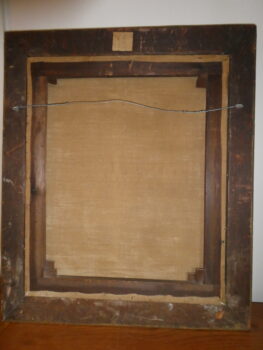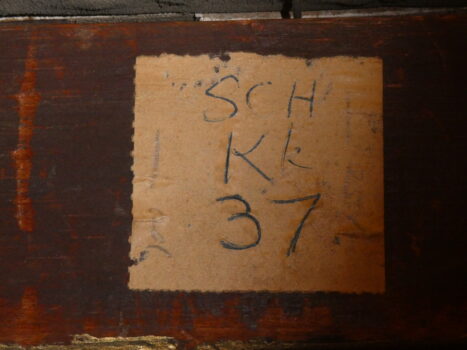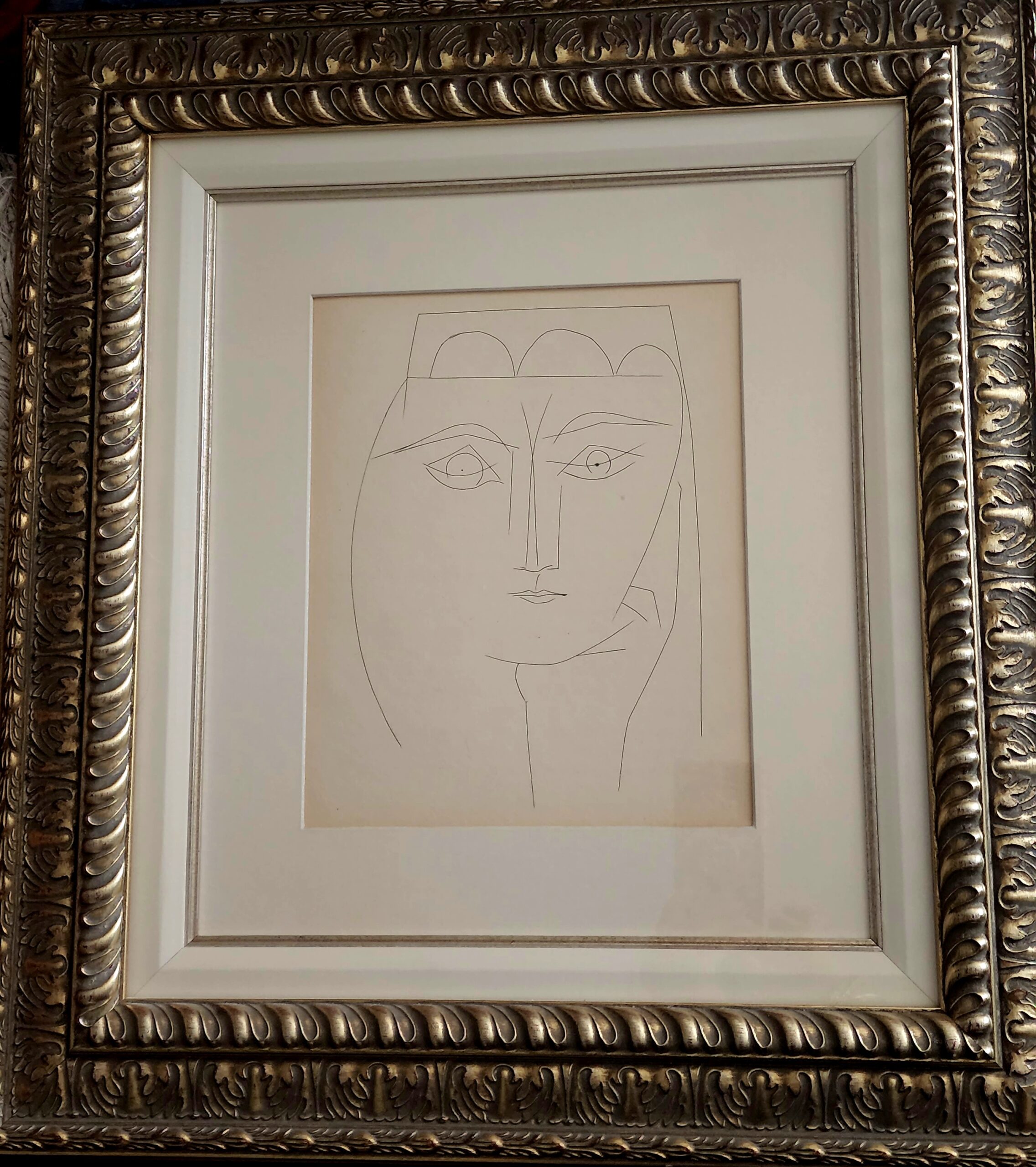The sleeziest of the sleezes on the internet. A complete and utter scam by someone that doesn’t know what they are doing.
This art appraisal report offers an in-depth and impartial assessment of the artwork in question, grounded in the appraiser’s expertise and familiarity with the art market. All the information and data analyzed in this report is sourced solely from the client.
Having a clear understanding of the value of your artwork is crucial in making informed decisions about its future. This report provides a precise estimate of the value of each piece, using US dollars as the base currency. It is not intended to encourage the sale of the artwork, but rather to provide valuable information on how to proceed should the client decide to do so in the future.
Detailed description of the artwork, including its medium, dimensions, and condition.
Checking Originality: Identification with Artificial Intelligence Test
In the quest to identify a match, Image Search employs advanced AI techniques to scour databases of images in order to find visually similar images. This is achieved through the use of various algorithms such as pattern recognition and machine learning. While some results may be considered as “matches” due to a clear similarity, other results may be inconclusive as they rely more on chance rather than any specific similarities. To conduct this test, a front-facing image was used as a reference to search for similar images on the internet.
The results of the automatic recognition are not conclusive. If a match is found, it will be shown below:
What specific information can we obtain from this test?
These results show clear similarities in scene, style, and/or colors. We can’t draw a conclusion yet because this coincidence could be caused by a lot of different things, like an artist with a certain style, a copy, a limited edition print, or a regular print. I need to keep going through the research and inspection steps to get to the final conclusion.
In this case this is an original hand made painting (not a print) based upon the know painting:
Portrait of Beatrice Cenci
Painting by Guido Reni
Age estimation
In order to determine the age of the painting attributed to 1806-1876, we must examine several characteristics of the painting itself. One of the most reliable indicators of a painting's age is the frame construction. If the frame is made of wood, it can be narrowed down to a certain period in time. Additionally, looking closely at the painting itself can provide clues as to its age. Examining the color palette and the technique used by the artist can give us an idea of when the painting was created. Finally, researching the artist who created the painting and their time period can provide further information of the painting's age. Overall, by closely examining the painting and researching the artist, we can gain a better understanding of the age of the painting attributed to 1806-1876.
Based on this information and the pictures provided, I can estimate this painting was made in circa mid to late 19th Century.
The origins of the wooden wedges on the corners of 19th century paintings are somewhat mysterious. Some experts believe that they were originally used to help keep the canvases taut, while others believe that they served as a way to protect the edges of the paintings from damage. Regardless of their original purpose, these wedges have become an important part of the history of art. Over time, they have come to be seen as an essential part of the works themselves, and they are often carefully preserved when paintings are restored. In some cases, the wedges have even been replaced with exact replicas when originals are lost or damaged. As a result, these humble pieces of wood have come to play a significant role in the world of art.
Condition of the artwork
This painting is in excellent condition and does not require any restoration. There are no appreciable damages and any minor damage present is minimal. The painting is a hand made reproduction attributed to 1806 - 1876, and it has been well preserved, making it a valuable addition to any collection. It is a testament to the skill and craft of the artist, and its longevity is a testament to the materials used in its creation.
Artist’s name, biographical information, artwork’s provenance (history of ownership) and exhibition history.
I study and research the signature of artwork to see if it matches any known signatures. There is no signature to investigate in this painting so it is impossible to reconstruct who has made it.
I have attributed this painting to Italian Artist Giuseppe Mazzolini (1806 – 1876). I find the style is a perfect match as well as the age and time period when he was active. Also, I found other artworks made by this artist that are reproductions of Guido Reni, so I think it is a perfect match. However, as there is no signature, we can only attribute the autorship to Giuseppe.
The term “attributed to” is often used in the art world to describe a work of art that may have been created by a certain artist, but for which there is no definitive proof. In some cases, an attribution may be made based on the style of the work, or on archival evidence such as letters or official records. However, in many cases it is simply not possible to know for sure who created a particular work of art. As a result, the attribution “attributed to” is often used as a way to indicate that the creator of the work is uncertain. While this may seem like a academic distinction, it can actually be quite important. For instance, when determining the value of a work of art, an attribution to a famous artist will almost always add to the value, whereas an attribution to an unknown artist will not have the same impact. In addition, attributions can also affect the interpretation of a work of art. A painting that is attributed to Rembrandt, for instance, will likely be viewed differently than one that is attributed to an anonymous artist. As such, attributions can be quite significant in the world of art.
Detailed analysis of the artwork’s style, subject matter, and significance within the artist’s oeuvre and the broader art world.
I can check if the style and type of painting match those of the artist referenced.
A hand made reproduction painting attributed to 1806–1876 typically exhibits a combination of naturalistic and romantic elements. The painting will often feature a realistic portrayal of the subject, combined with an idealized view of the subject's emotions or feelings. The brushwork will often be bold and expressive, with the artist expressing their unique style in the painting. Colors will often be vibrant and bold, as the artist seeks to capture the essence of the subject. The composition of the painting will often be balanced and dynamic, creating a harmonious painting. Overall, a hand made reproduction painting attributed to 1806–1876 will be an artistic expression of the artist's unique vision and style.
Comparable sales information, including prices realized at recent auctions or private sales of similar works by the artist or in the same medium.
: Sir Lawrence Alma-Tadema In order to provide an up-to-date estimate of the fair market value for the painting attributed to Sir Lawrence Alma-Tadema, I utilized the data collected, including auction prices and other relevant market information. This is crucial as it can be used in various contexts such as insurance, estate planning, and art market analysis. It also offers a valuable insight into how the valuation of the painting may have changed due to environmental or economic factors specific to the work of Sir Lawrence Alma-Tadema.
The auction prices were a significant factor in determining the current market value of the artwork, as they are based on actual transactions between buyers and sellers in the art market. As such, they are a strong indicator of the expected value of the piece in the near future.
By analyzing auction results from the last 6 months, I was able to accurately determine the current fair market value of the artwork. This approach provides a comprehensive view of how the value has changed over time and gives insight into any potential areas of appreciation or depreciation in its price. Additionally, it allows me to adjust my valuation as new auction prices become available.
Conclusion
Investing in art can be a great idea for many reasons. Not only can it be an aesthetically pleasing addition to a home or office, but it can also be a great financial investment. Buying a piece of artwork can be a great way to increase the value of a collection over time. Artwork can appreciate in value and often provide an excellent return on investment. Furthermore, artwork can be a great way to diversify a portfolio and can provide a unique and meaningful way to honor someone or commemorate an event. Additionally, the fact that art is unique and often one-of-a-kind means that it can potentially become a prized family heirloom or a collector's item. All of these reasons make investing in art an attractive option for those looking to add something special to their collections.
French Artist Jean-Baptiste-Camille Corot This painting can be considered valuable by the art market because it is a hand-made reproduction attributed to 1806-1876 French artist Jean-Baptiste-Camille Corot, who is highly regarded for his Romantic landscape paintings. Corot's works are highly sought-after, and this reproduction painting would likely appeal to art collectors looking for a piece of artwork that captures the essence of Corot's style. Additionally, the fact that it is a hand-made reproduction makes it a unique and special piece of art, as no two reproductions will ever be the same.
Final Appraisal Value ($)
2,500-3,000$
Appraisal Report made by:
Andrés Gómez
BSc, MSc, Expert Art Appraiser
10+ years of experience in Online Art Appraisals
100k+ Customers Served
Antique Store Owner
You can check my portofolio of past appraisals here:
https://www.appraisily.com/andres-portofolio/

Relevant photographs or supporting documentation, such as condition reports or expert opinions
A detailed summary of the appraisal process and the appraiser’s qualifications.
Mark-to-market art appraisal is a vital method for determining the current value of a piece of artwork. This form of valuation requires an appraiser to consider various factors, such as market conditions, the condition and age of the artwork, and the artist’s reputation. By taking all these elements into account, a mark-to-market art appraisal delivers an accurate assessment of a piece of artwork’s current market value.
The artist’s reputation, as determined by their track record in gallery and museum shows, awards, and other accomplishments, is also considered in mark-to-market art appraisal. Appraisers use this information to determine if the value of a piece is likely to increase or decrease over time. Additionally, they will inspect the condition of the artwork and note any signs of wear or damage that might affect its future resale value.
When performing mark-to-market art appraisals, appraisers also consider market conditions by researching current art market trends and comparable works that have recently sold. This information is used to provide an estimate of a piece’s worth at that point in time. By considering all of these factors, mark-to-market art appraisal is able to give a reliable indication of the current value of a work. This kind of valuation can also ensure fair prices are paid and received when buying or selling art.
In summary, mark-to-market art appraisal is a crucial tool for determining the true value of a piece of artwork, enabling buyers, sellers, and appraisers to make informed decisions regarding its worth. It takes into account multiple aspects to provide an accurate assessment of the current market value of a work. This information can be used to ensure that buyers and sellers are getting a fair price for the artwork, and that the appraiser’s valuation is up-to-date and reflective of current market conditions.
In the case of insurance replacement appraisals, mark-to-market art appraisals can also be used to accurately estimate the cost of replacing a lost or damaged artwork. The current value, as determined by the appraisal, is then used to determine the amount that the insurance company will pay back to the policyholder. This way, policyholders can rest assured that they will receive an appropriate sum for any artwork that needs to be replaced due to accidental damage or theft. Additionally, this kind of valuation helps insurers ensure they are not being overcharged when artwork needs to be replaced as part of a claim settlement.
The appraisal process is a thorough evaluation of the item or items in question. It involves researching and analyzing the information provided by the requester in order to provide an accurate estimate of its value. The appraiser takes into account factors such as condition, rarity, demand, and market prices. Photographs and detailed descriptions are especially important when providing an appraisal, since they help the appraiser identify any potential flaws or defects that could affect the item’s worth. By using all the resources that are available, an evaluation can be done quickly, efficiently, and with a high level of accuracy.
A statement of the appraiser’s liability and any potential conflicts of interest.
A qualified art appraisal, also known as a formal written evaluation, is a professional assessment of the monetary value of a piece of art by an individual who has specialized knowledge, expertise, and training in the field of art appraisal. This person must meet certain educational and professional requirements, including experience in researching and evaluating art, as well as knowledge of the art market and current market trends. The purpose of a qualified art appraisal is to provide an objective and unbiased opinion of the value of a piece of art for various purposes, including insurance claims, tax planning, estate planning, or to help determine a fair price for a sale or purchase.
We are committed to providing our clients with the most accurate and unbiased appraisal reports. To ensure impartiality, we adopt a flat rate, fixed fee structure for all appraisals, instead of a percentage-based fee. This eliminates any potential conflicts of interest between the art appraiser and the final report value. Our appraisal reports are in compliance with the Appraisal Foundation’s USPAP (Uniform Standards of Professional Appraisal Practice) standards and guidelines, which are widely accepted as the ethical and performance standards for appraisers. This guarantees that our reports are of high quality and legally defensible.
How to sell this artwork.
We have a structured guide to help you sell your artwork, you can find it here.










